Kurt Neumann of The BoDeans: Master 'Bastard' Guitar Builder
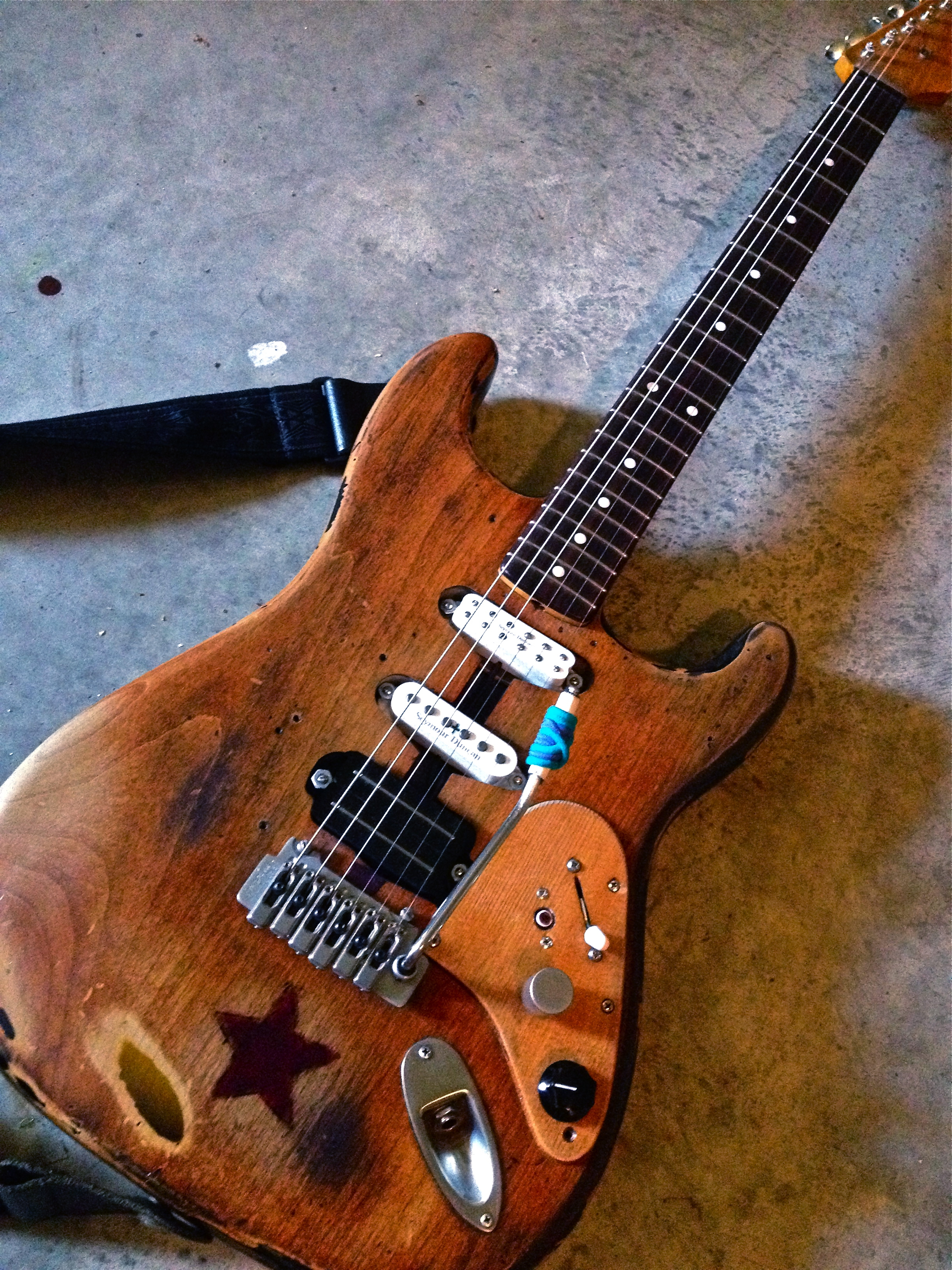
A long time ago, I started ripping apart guitars in search of tone, sustain, compression and a personality.
See, after many, many years of really bad birthday and Christmas gifts, my parents shocked me. Out of the blue, they gave me a soldering gun. And that was the start of it. 'Cuz I had grow up playing drums. I was a drummer! What did I care about tearing the guts out of a guitar? But more and more, I started thinking about ideas. "Hey, why does the pickup have to go here? Why not over there?"
And so, little by little, I would gather up guitar bodies and pickups from friends who weren't playing their guitars. "Hey, you're not using this, are you?" And I would construct one-of-a-kind "Bastards." That's the name I came up with because I was "bastardizing" perfectly fine guitars.
As fate would have it, I somehow ended up being the guitar player in the band instead of the drummer. And all I had to play was my "Bastard" of the moment. At first, a Hamer body with a Japanese version of a P90 super-glued down to the body, back from where the neck humbucker was supposed to be. But because I left the cover off, sometimes the pickup would fall apart and I would have to re-glue the magnet back on to the coil. And, yes, I have a picture.
After that, it was several Teles with an extra pickup placed right behind the neck pickup, and the neck and extra pickups had a reverse slant. And, yes again, I have a picture.
In the last couple of years, I've started putting together my own guitars. I learned a lot about pickups and pots and caps and wood. And it helps me put together guitars that I know inside and out. So I know exactly what they can do, exactly how they "are," you might say.
I like to start with raw-wood bodies and necks. I'll custom order a body from a piece of wood that interests me, with the cut and routing I want. I prefer rear-routed guitars for two reasons. One, they are much easier to get at the caps and pots and wires at home and at a gig. Two, I hate plastic! My whole thing is about wood tone. While I have no science behind it, I have it in my head that there is an inherent tone to woods that I don't find in plastic. So I try to experiment with all different woods. And I believe even there, in the same type of wood, you'll find two different-feeling and sounding instruments.
Get The Pick Newsletter
All the latest guitar news, interviews, lessons, reviews, deals and more, direct to your inbox!
So I put these "Bastards" together and then spend time playing them, and changing and adjusting them until they seem happy. And then they sing. Even in the electronics, I find that you can't just slap in a tone pot or a treble bleed resistor in all guitars. In my experience once again, they all sound different in different guitars. And again, no science here, just listening. I'll hang some alligator clips off the pots and go through a box of caps and resistors until I find a combination that works. Together, for THAT guitar, that piece of wood.
Also, I like to screw all the pickups straight into the wood of the body. I've always felt that rather than hanging the pickups off a piece of plastic, it should be like part of the wood. Secure. And move with the wood, resonate with the wood. I imagined that plastic sheets could move or vibrate in a very subtle way. And that, when combined with string vibration, might affect the signal to the magnetic field of the pickup. Not necessarily with phasing issues but more like the way wind affects sound outside. But that's all crazy speculation. Bottom line is the pickup is screwed to a solid foundation. And when building anything, it's a good idea.
Lastly I don't like much finish on the body or neck. I really prefer Tung oil finishes. You can slowly build up as much or little finish as you like. And you can always re-apply if you want to years later. If I want color, I'll mix up a color with some acrylic paint. Thin application and then Tung oil over it. And yes the Tung oil dries over the paint just fine. Wasn't sure it would work, but I've done it for years now. Word of warning, though: This is not a tough finish. It will wear off in time. But I prefer it this way. That way, you spend time taking care of it. Like you would an old violin or cello.
Years ago, I approached a guy about building me a custom-made-from-scratch guitar -- which he did. My design was to emulate a bigger-body guitar like a Chet Atkins Tennessean but in a solid-body guitar. So I could have the feel of a big body guitar and still have the vibrato bridge.
We had to chamber out some of the maple body because the guitar is heavy as f@ck. Wilkinson trem bridge and bypassed the tone pot. And the mids in this Bastard will rip your face off. It was once described as sounding like a chainsaw. But when I hear the opening lick of "Closer to Free," I just smile. Sometimes when I was playing it on stage, It felt like I was riding a big surf board down a huge wave and I'm holding on for dear life.
Since then I put together a korina wood Strat with Joe Barden Two Tone/ DiMarzio singles in the middle and neck. And a blender to round out the bridge tone. I like many pickups, but I find the Joe Barden Two Tone pickups to be really well placed in between PAF's and single coil pickups. And for me, that works best.
I also put together a pine body Tele with an allegedly 35-year-old wood body and a big fat knot in the middle of it. With a custom-order Musikraft neck, Joe Barden humbucker in the bridge and neck with a series/parallel switch.
And lastly, years ago I was in a friend's repair shop when I found an old Fender Strat body sitting there all alone. I asked him to put a Strat together for me. He did, but I didn't really like it. So, being me, I tore it apart and started over. After I sanded the finish off the body, so it could breathe, I noticed it was a one-piece body, which made me happy. I ordered a strange-looking Strat neck one night off eBay.
I'm not sure who made it, but I've never felt any other neck like it. Not much finish on either the body or the neck. Again, a Wilkinson bridge. Barden Two Tone in the bridge. Seymour Duncan stack in the middle sunk way down low, and a Seymour Duncan lil'59 in the neck with series/parallel switch. And, of course, all pickups in all three of the recent guitars have the pickups screwed straight into the body.
That way they resonate with the wood. So, three more bastards.
These last three are the electrics I used on most all of the new BoDeans' American Made record. From the first chimey notes of the song "All the World" (Korina Strat), to the opening riff of "Jay Leno" (pine Tele), to the fat lead in "All Over Me" (See chainsaw guitar above), to the leads in "Absolutely" and "Don't Bring Me Down" (American Star Strat). All Bastard guitar tone on this record. And all played through a hand-wired Fulton/Webb 17-watt head into a 3/4-inch pine speaker cab loaded with one 12-inch Celestion lead 80 and one 12-inch Celestion alnico blue. And, of course, I opted to make my own cabinet for the heads as well.
Sometimes I wish I could just leave well enough alone. But I can't. Bastards!!!
Guitarist Kurt Neumann is the founder, primary writer and frontman of the veteran Milwaukee-based group The BoDeans. “I’ve always thought of the BoDeans as a truly American band,” he says. “We were blue-collar kids straight out of the heartland—how could we be anything else? ‘Roots rock’ was a label I fought when I was younger, but I came to realize that if by ‘roots’ you meant blues, rock, country and soul all slammed together into one sound, then I’d say yes — that is the sound of American-made music.” Check out The BoDeans at their official website and on Facebook.
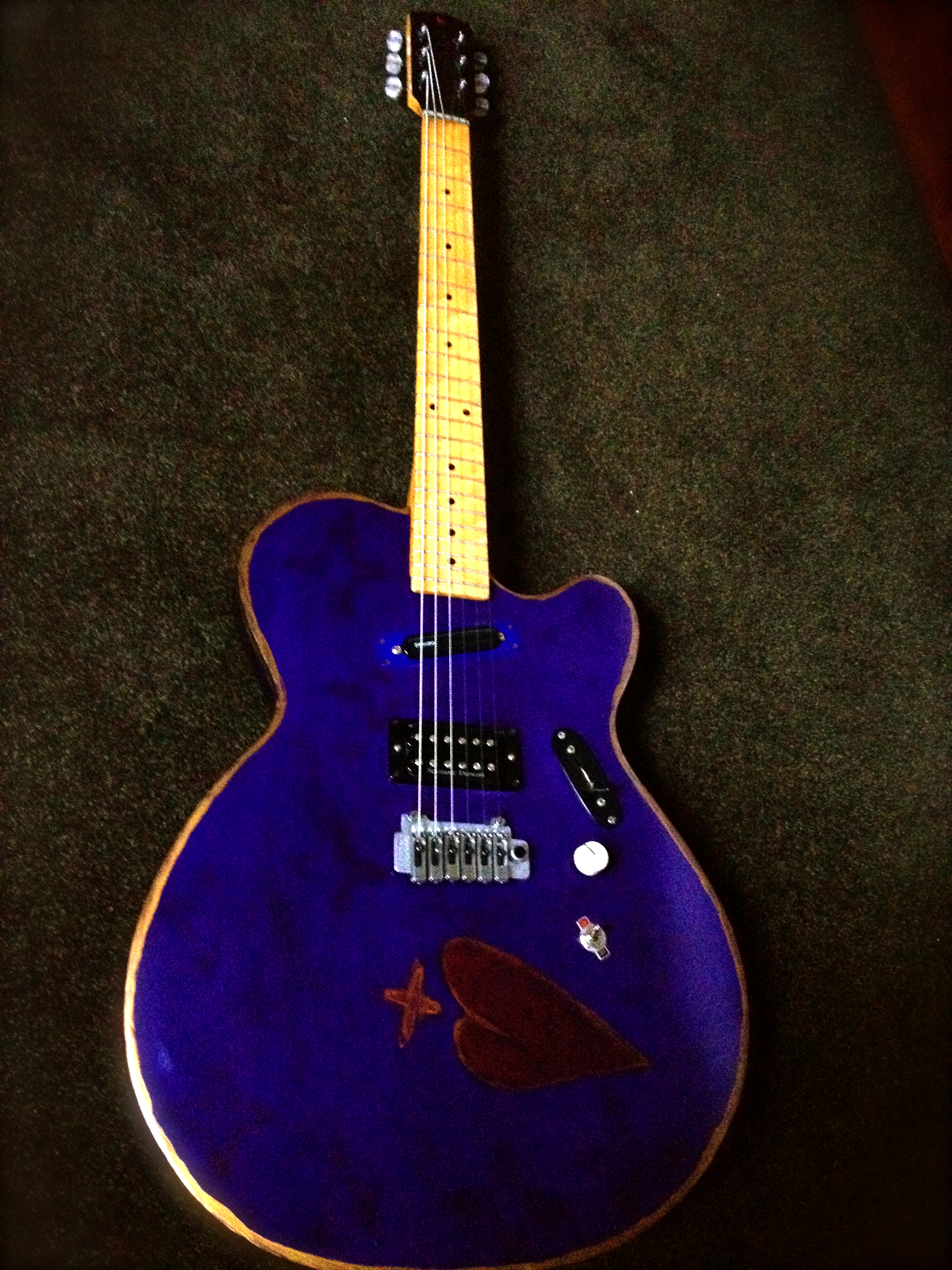
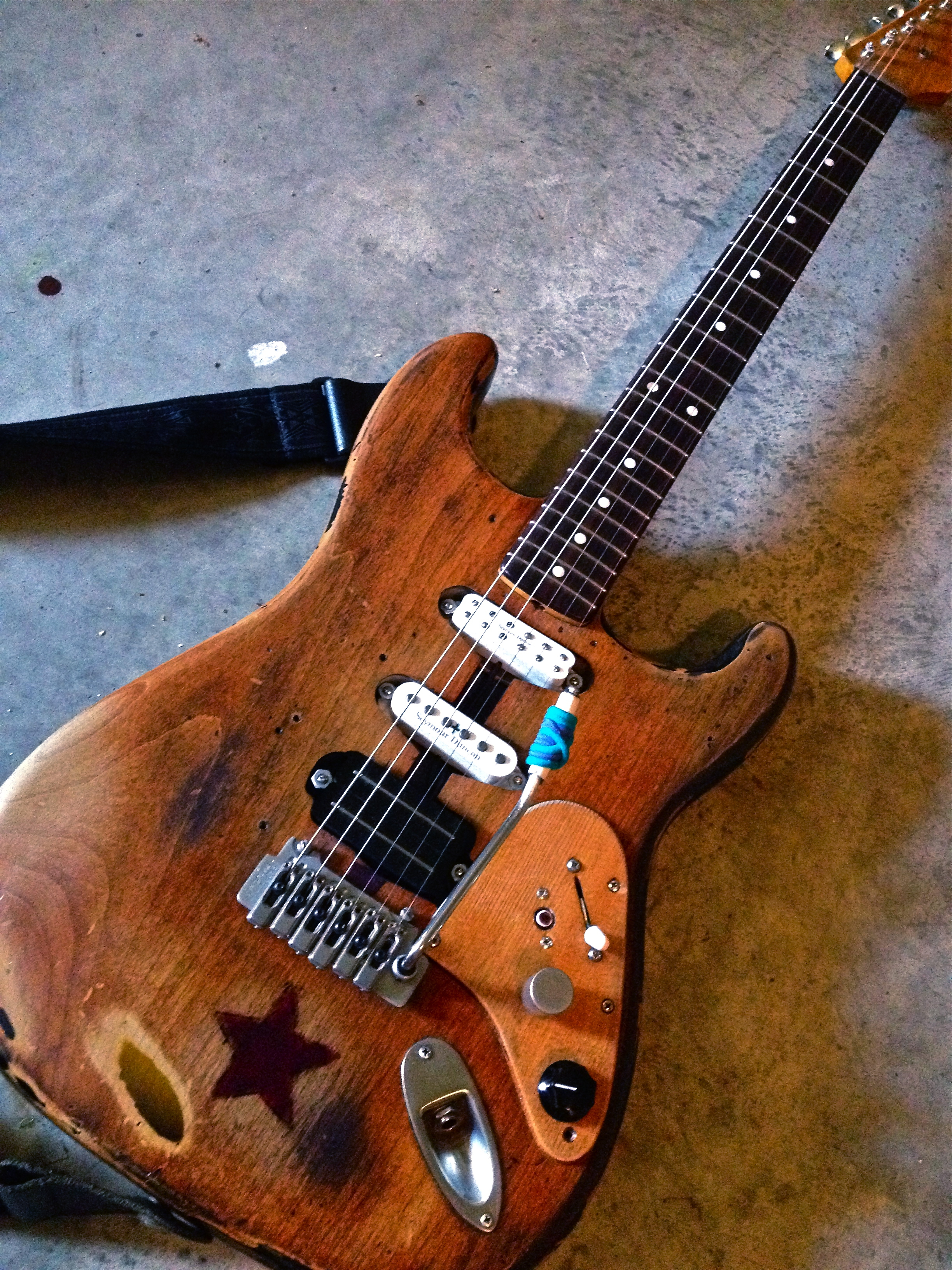
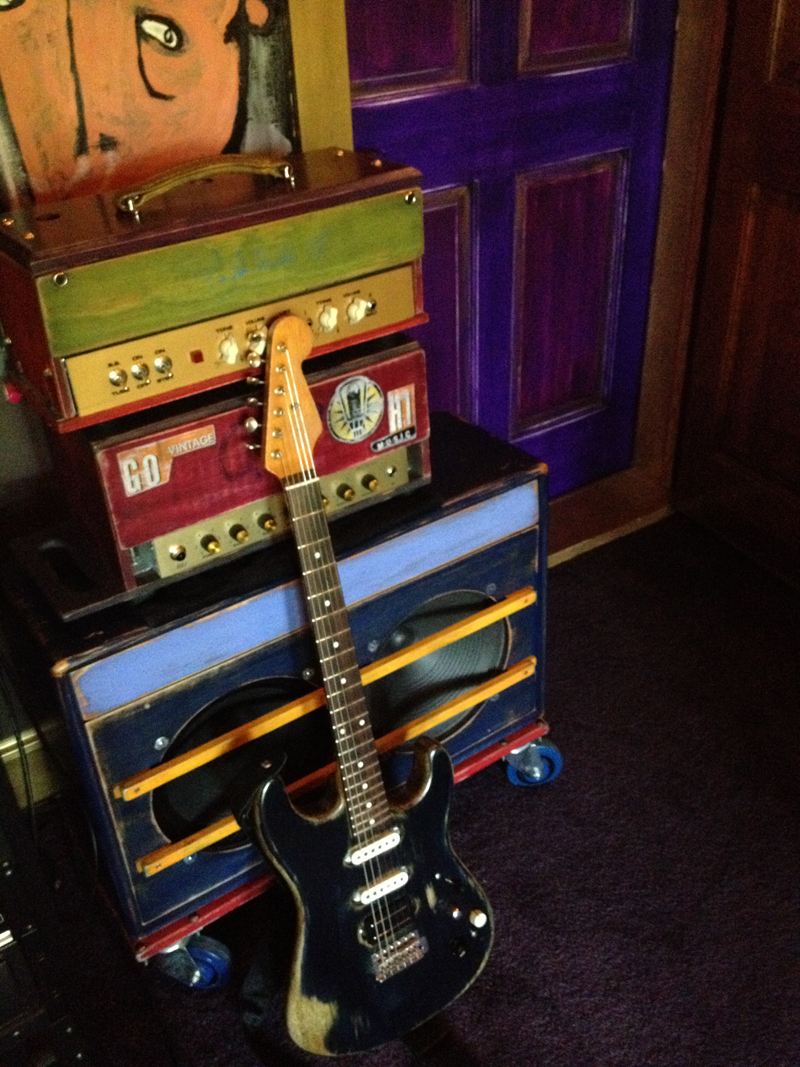

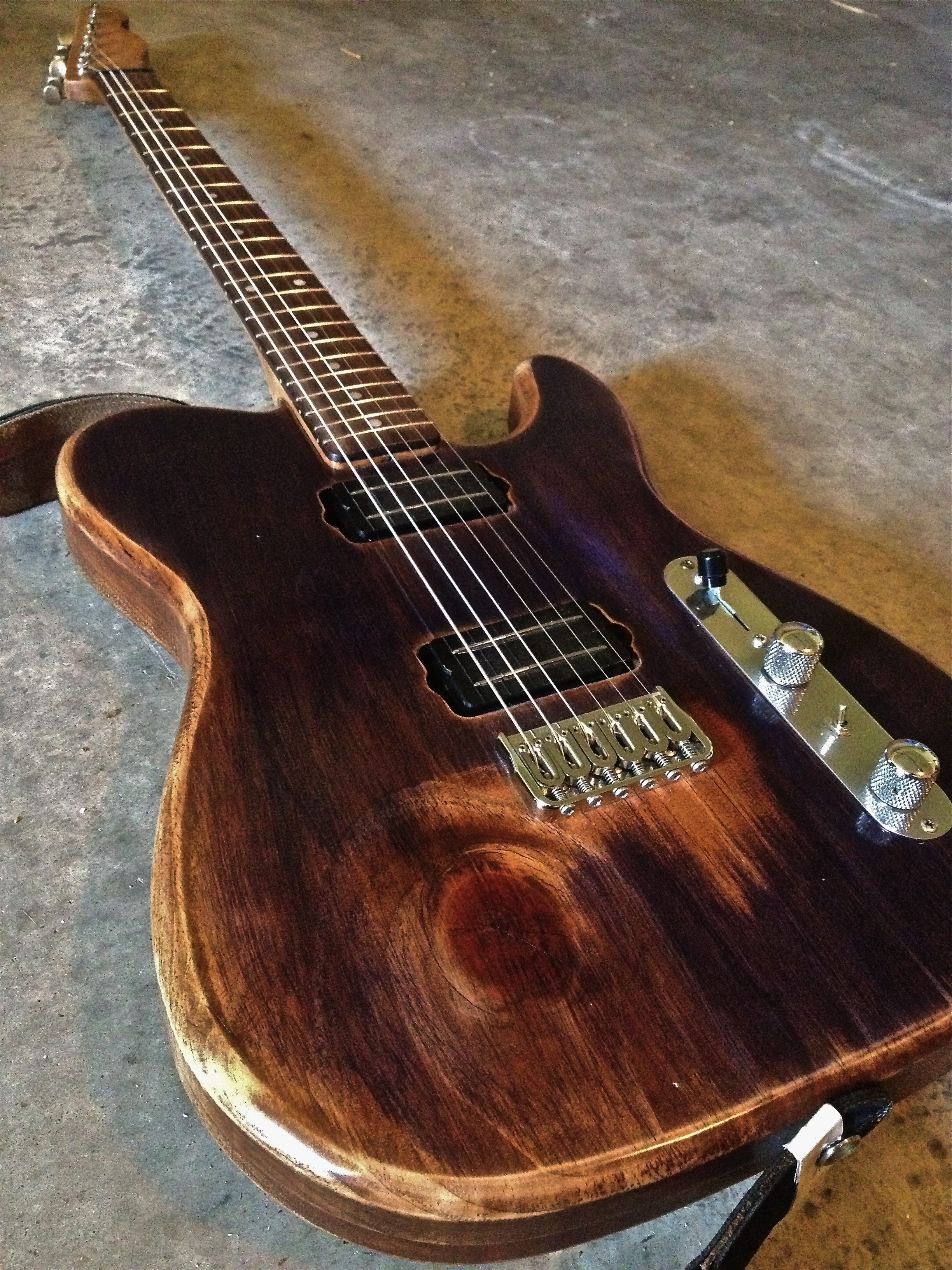
“His songs are timeless, you can’t tell if they were written in the 1400s or now”: Michael Hurley, guitarist and singer/songwriter known as the ‘Godfather of freak folk,’ dies at 83
“The future is pretty bright”: Norman's Rare Guitars has unearthed another future blues great – and the 15-year-old guitar star has already jammed with Michael Lemmo










